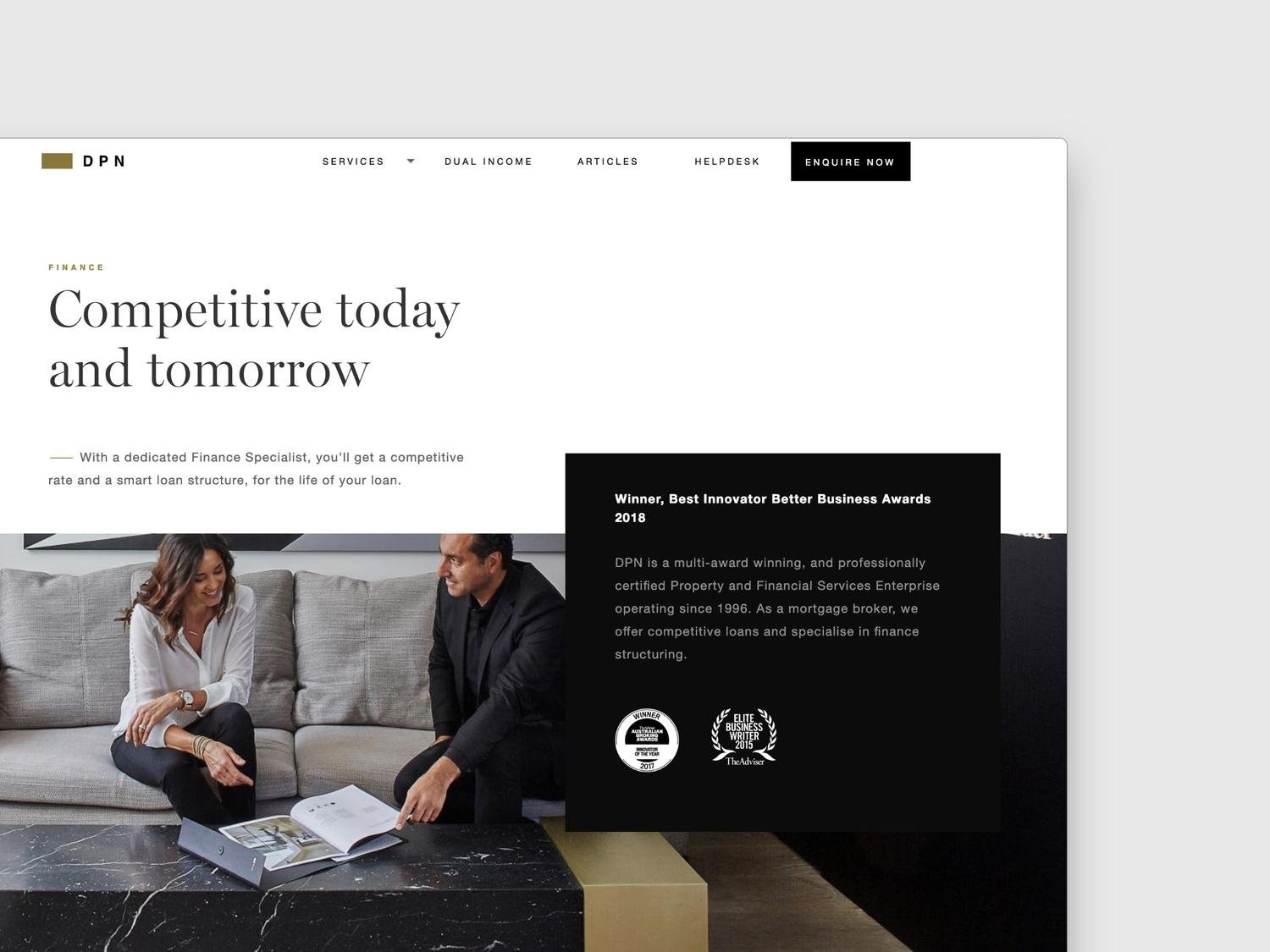DPN
Elevating Financial Services and Property Investment through Strategic Digital Transformation
This case study delves into DPN's journey, revealing how they strategically leveraged technology, data analytics, and customer-centric approaches to bolster trust, enhance conversions, and guide customers through their property investment journeys.
DPN is an acclaimed financial services and property investment firm headquartered in Sydney, Australia. The company embarked on a website redesign project aimed at showcasing its extensive array of services and enhancing website conversion rates.
Objective
The primary goal of the website redesign was to enhance the user experience (UX) by presenting DPN's products and services clearly and ultimately improving the website's overall conversion rate.
Challenges Addressed
1. Establishing trust and raising awareness about DPN.
2. Creating new business opportunities from both new and existing customers.
3. Guiding customers throughout their property investment journey.
Results Achieved
65% reduction in cost per acquisition.
92% increase in the website's conversion rate.
57% improvement in average position on Google Ads.
Understanding the Customer Journey
To better understand the customer journey, we analyzed data from sources such as Google Analytics, Facebook Ads, and AdWords. Proto-personas were developed to align with customer experience (CX) journeys, helping us identify user flows, pain points, and emotional states. The user journey was meticulously mapped, encompassing all entry points from digital marketing campaigns and promotional materials. User interviews and competitor analysis underscored the importance of establishing strong credibility for the brand and its services.
Empathy Mapping
User interviews led to the creation of an empathy map, which played a pivotal role in shaping the visual and content design of landing pages
Page Structure
Each landing page was designed to accommodate a wealth of information without overwhelming users. Data analysis, utilising tools such as VWO and Google Analytics, was instrumental in constructing an effective conversion funnel. The funnel began with building strong brand awareness, leveraging social proof and testimonials to instill trust and forge emotional connections with customers.
Informative Content
Articles and page content featured data from reputable third-party sources to support the inquiry process. The page structure allowed for the hierarchical organisation of multiple layers of information within a limited space, all while maintaining the clean and distinctive DPN brand aesthetic.
A/B Testing and Dynamic Content
Frequent A/B testing was employed to validate assumptions and refine page layouts. Dynamic content played a crucial role in personalizing pages based on digital marketing entry points, lead funnel stages, and user profiles.
Adwords SKAG Campaigns
The campaign portfolio expanded to include several Single Keyword Ad Group (SKAG) campaigns related to DPN's flagship products. This approach ensured high-quality acquisitions at a reduced cost through CPC discounts applied to high-quality score ads. Dynamic headlines on landing pages were used to enhance the conversion rate.
Display Campaigns and Retargeting
Dynamic display ads, centered around DPN properties, were created to increase acquisitions. Retargeted lists segmented users and delivered targeted display ads linked to specific landing pages featuring selected high-growth and positive income properties.
Chatbot
A chatbot, operational round the clock, addressed general inquiries and collected contact information to generate acquisitions. Automated sequences were designed to deliver engaging articles based on users' previous interactions with the bot.
Helpdesk and Articles Section
As part of the UX strategy, a helpdesk and articles section was introduced. This was in response to the discovery that many users lacked trust in property investment agencies and were hesitant to enter the property market. Educational articles and guides were crafted to cater to different personas and various stages in the customer journey. The information architecture for the helpdesk and articles section was developed through card sorting workshops and affinity diagrams.
NEXT PROJECT 











